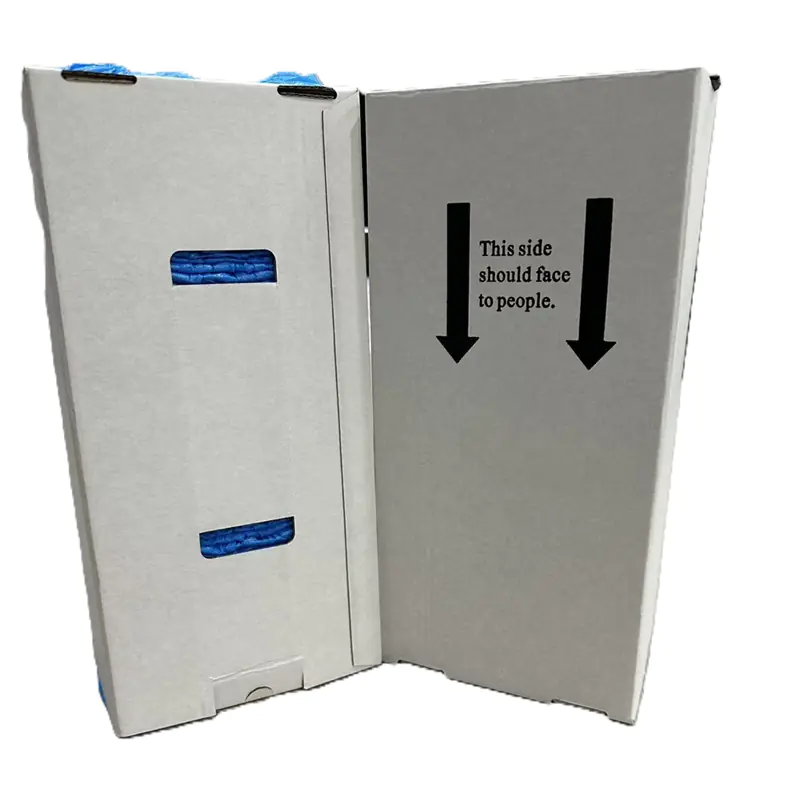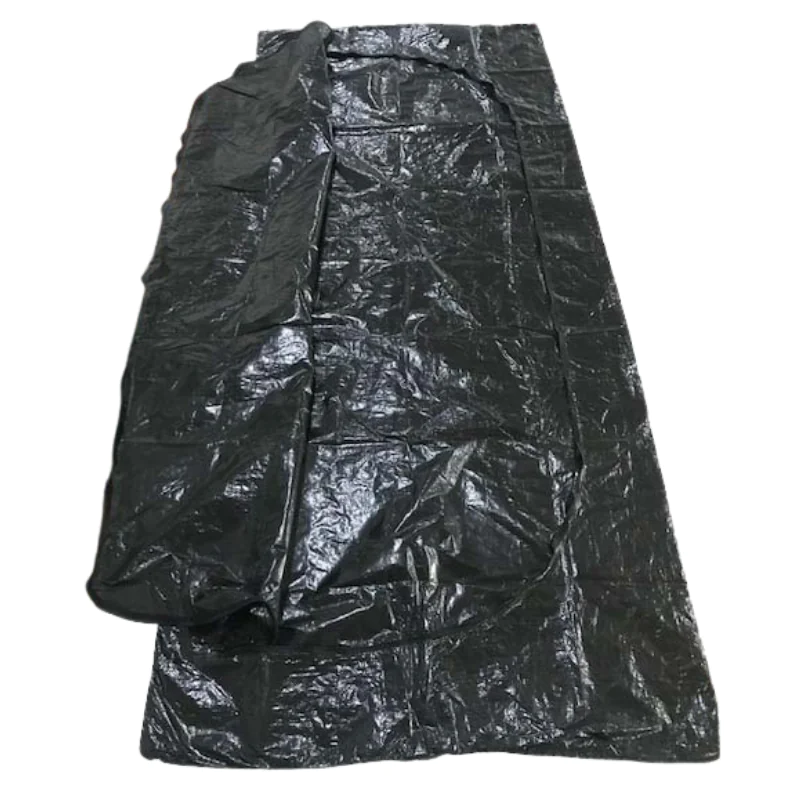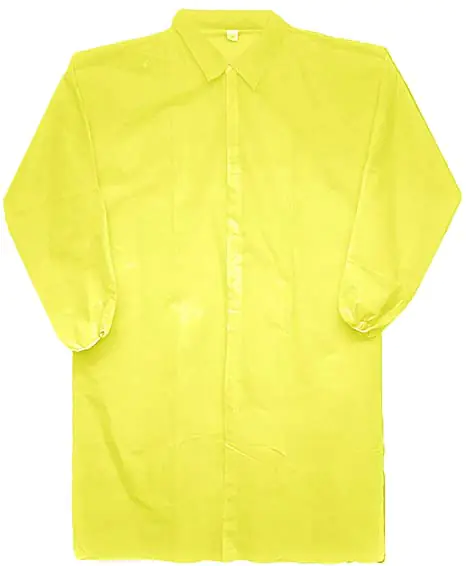Disposable medical gowns are a core part of pandemic preparedness. For B2B entities, they protect people, protect places, and protect business. They help keep infection control strong when an outbreak grows fast. They support business continuity when surge demand hits. With a clear plan, you can secure stock, hold a safe buffer, and keep costs in line.

What are disposable medical gowns?
A disposable medical gown is a single use cover you wear over clothes. It shields the front, sides, and back. Most have long sleeves with knit cuffs or elastic cuffs. They tie at the neck and the waist. Gowns help block fluids, droplets, and splashes in daily care and in high-risk work.
Common materials include:
- PP non woven for light tasks
- SMS for stronger, more breathable wear
- PP+PE laminated for impervious front panels
- Microporous film for a mix of barrier and airflow
- PE film for simple waterproof cover
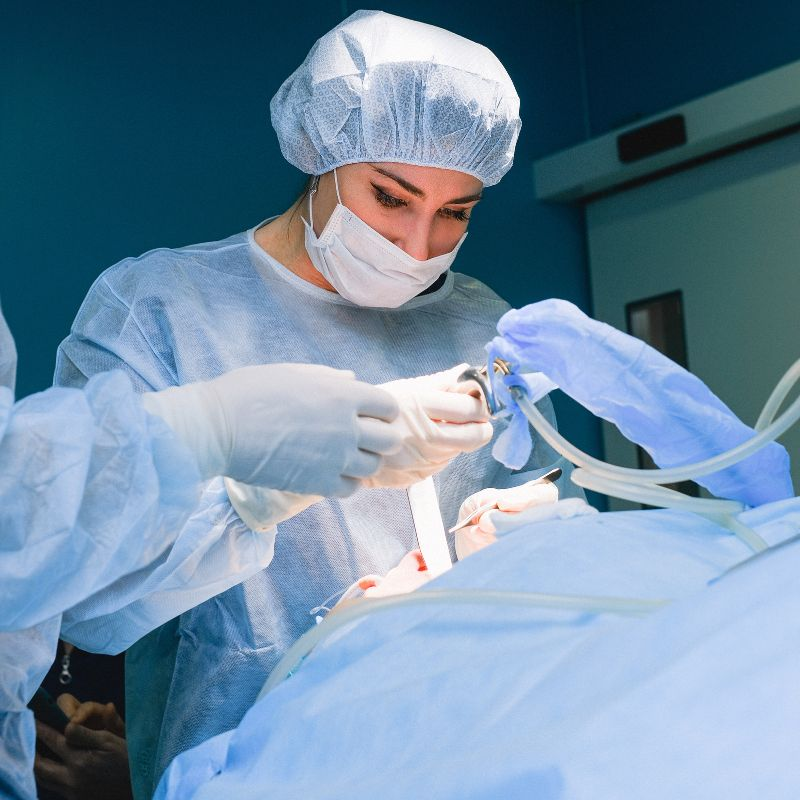
Why gowns matter in pandemic preparedness
Disposable medical gowns support your PPE program in many ways:
- Barrier protection. They form a fluid resistant shield over the torso and sleeves.
- Infection prevention. They help reduce cross-contamination between rooms and zones.
- Surge readiness. They are fast to make, ship, and deploy in an outbreak.
- Fit for many roles. From triage to procedures, they match many clinical tasks.
- Staff safety and morale. Clean, dry staff can work longer and better.
- Public trust. Visible PPE builds confidence in your site and your plan.

Gown types for different risks
Match the gown to the risk. This simple map helps teams choose fast:
- Isolation gowns. Good for daily care, triage, and most wards. Use fluid resistant or impervious fronts when splash risk is high. See a strong, simple option: fluid resistant PE isolation gowns.
- Surgical gowns. For the operating room and long cases. Pick a breathable, strong style like a SMS surgical gown.
- Higher barrier isolation. Use a PP+PE laminated isolation gown when you need an impervious front.
- Peak surge tasks. When splashes are heavy, a AAMI Level 3 CPE isolation gown gives robust front protection.
Note: pick the lowest level that still meets your fluid risk. This keeps cost and heat load down.
Key features B2B buyers should check
Focus on fit, barrier, and workflow. These points guide fast checks:
- Coverage. Front panel wide enough to wrap the sides; back closure stays shut.
- Sleeves and cuffs. Knit cuffs or elastic cuffs fit under gloves; no gaps.
- Closures. A firm neck tab or tie and strong waist ties that resist breakage.
- Seams. Clean seams. In high splash zones, look for sealed or taped seams.
- Breathability. SMS or microporous helps manage heat on long shifts.
- Low lint. Clean fiber control helps protect tools and fields.
- Sizes. Stock S to XXL so every worker can move and reach.
- Packaging. Choose individually packed for clean rooms; bulk for busy wards.
- Labels. Clear lot number, batch, date, and expiry help traceability.
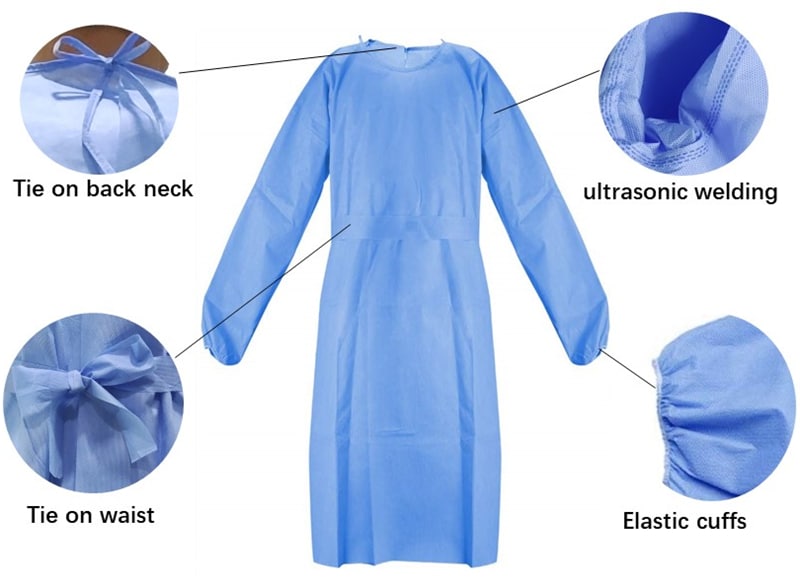
Materials that balance barrier and comfort
Each material has a clear role in a pandemic plan:
- PP non woven. Best for low splash tasks. Low cost, low lint.
- SMS. Good breathability and strength for long wear.
- PP+PE laminated. Film-faced front boosts impervious protection.
- Microporous. A film with micro holes that allows airflow while it blocks splashes.
- PE/CPE film. Simple waterproof cover for short, wet jobs.
Tip for buyers: mix fabrics across the stock to match real tasks. This saves money and cuts heat stress.

Stockpile strategy for pandemic preparedness
A smart stockpile turns a list of SKUs into a ready surge plan.
- Set a base load. Map normal monthly use by unit and size.
- Add a buffer. Hold a 8–12 week buffer stock for fast outbreaks.
- Use FIFO. Rotate by “first in, first out” to protect shelf life.
- Split by risk. Keep tiers: basic for low risk, mid for daily wards, high barrier for splash.
- Store well. Keep cartons off the floor, away from heat, light, and wet.
- Drill counts. Run monthly checks of counts, dates, and carton integrity.
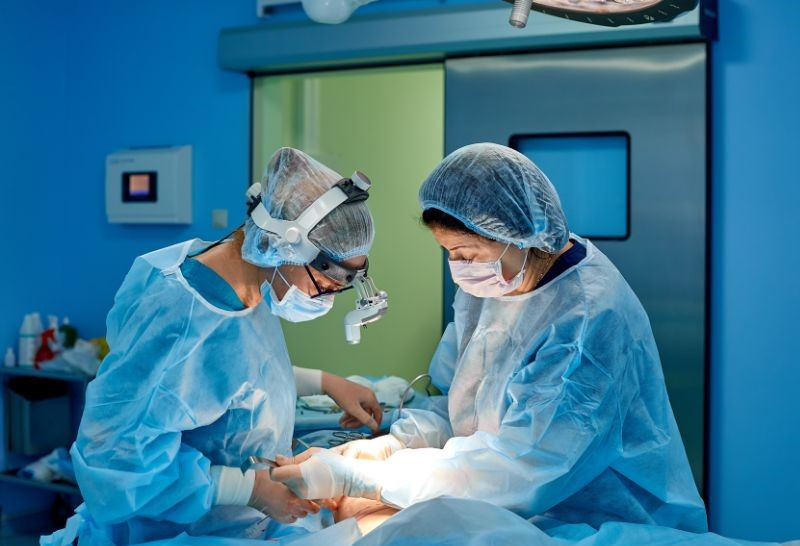
Supplier readiness and risk control
In a pandemic, supply chain can strain. Reduce risk with clear vendor steps:
- Capacity. Confirm peak daily output and backup lines.
- Lead time. Know normal and rush lead times by region.
- Dual source. Place core SKUs with at least two approved sites.
- QC process. Ask for incoming fabric checks and in-line inspection.
- Traceability. Ensure lot numbers tie to each carton and pack.
- Samples. Test fit, barrier, seams, and donning/doffing with your teams.
- Logistics. Pre-book lanes when a surge may hit; align shipping windows.
Training and SOPs make gowns work
Even the best gown needs strong SOPs and practice.
- Selection. Post a simple chart so staff pick the right gown for the task.
- Donning. Put arms in, close the neck, tie the waist, pull gloves over cuffs.
- Doffing. Break ties, peel away from neck to hem, roll outside in, and dispose.
- Change rules. Replace if soiled, torn, or after a zone change.
- Bundle PPE. Pair gowns with masks, gloves, sleeve covers, and shoe covers as the task needs.
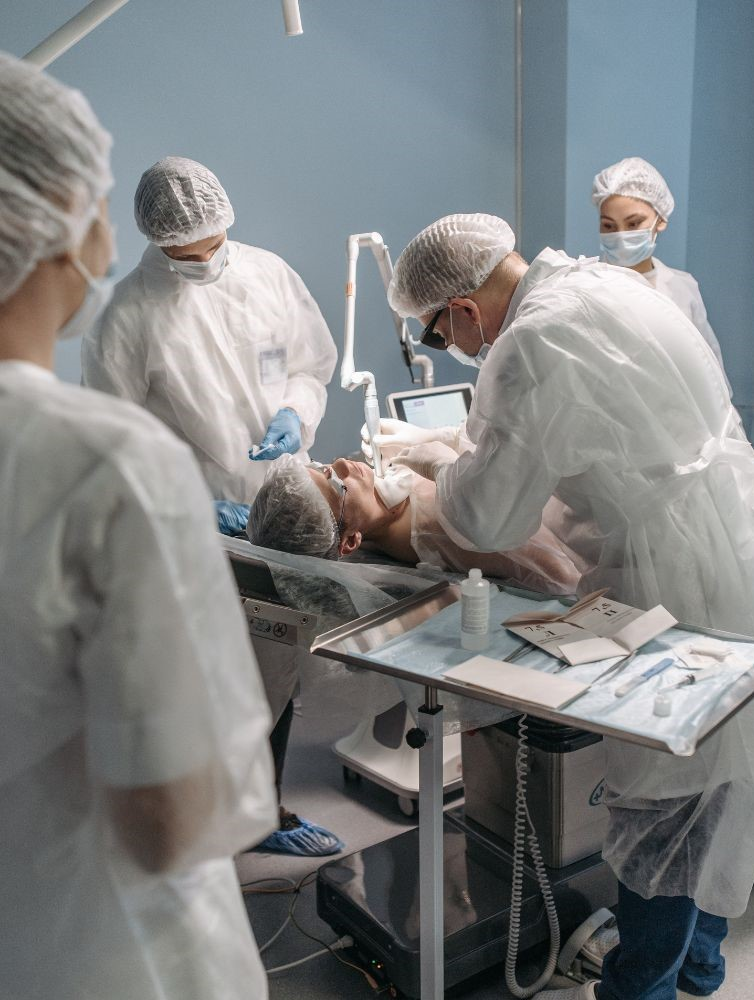
Cost control without losing safety
B2B entities can hold safety and manage cost at the same time.
- Right level, right job. Do not overspec. Match barrier to fluid risk.
- Tiered buying. Use low cost PP for low risk; keep SMS and PP+PE for higher risk.
- Pack smart. Use bulk in wards; individually packed where needed.
- Data loop. Track defect rate, waste, and returns. Tune buys each quarter.
- Heat load. Choose more breathable options to reduce staff fatigue and breaks.
Build a simple, strong spec
A short spec helps every team source the same thing:
- Type. Isolation or surgical; sterile or non-sterile.
- Material. PP, SMS, PP+PE, microporous, or PE.
- Design. Knit cuffs or elastic cuffs; thumb loops or no loops; back closure style.
- Barrier zones. State where you need fluid resistant or impervious panels.
- Packaging. Individually packed or bulk; inner bag and carton counts.
- Labeling. Lot number, batch, expiry, and clear use steps.
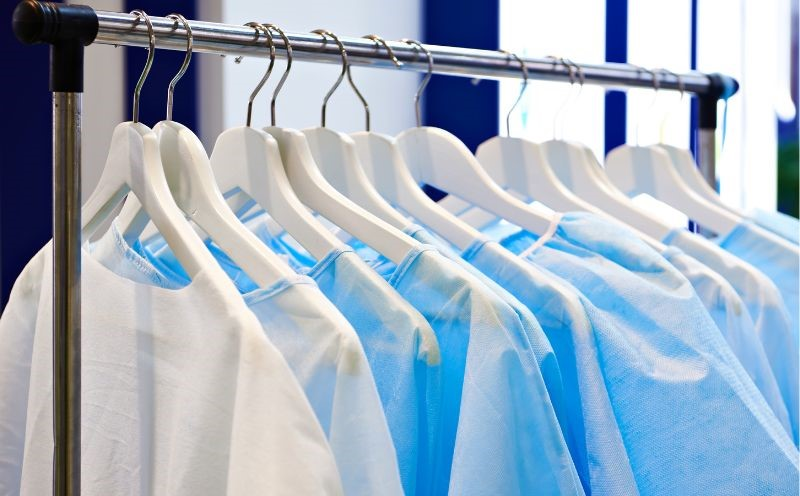
Helpful product paths for your plan
- For daily ward use and wet jobs, try fluid resistant PE isolation gowns.
- For long theater cases with airflow, see the breathable SMS surgical gown.
- For splash-heavy areas, add a PP+PE laminated isolation gown.
- For peak surge with high front barrier, stock an AAMI Level 3 CPE isolation gown.
Quick readiness checklist for B2B entities
- Clear pandemic preparedness plan with a gown stockpile
- Tiered materials matched to task and fluid risk
- Approved suppliers with backup and clear lead times
- On-site testing of fit, seams, and donning/doffing
- FIFO storage, buffer stock, and regular counts
- Easy SOPs and short training for staff rotation
- Clean labels with full traceability
- A reorder point and 3–6 month rolling forecast

Bottom line
Disposable medical gowns are a key tool in pandemic preparedness for B2B entities. They help block fluids, protect staff, and keep care going when demand spikes. A strong plan covers the right types, the right materials, a safe stockpile, tested suppliers, and simple SOPs. With smart specs and steady rotation, your teams can act fast, stay safe, and keep your business continuity strong in any outbreak.



